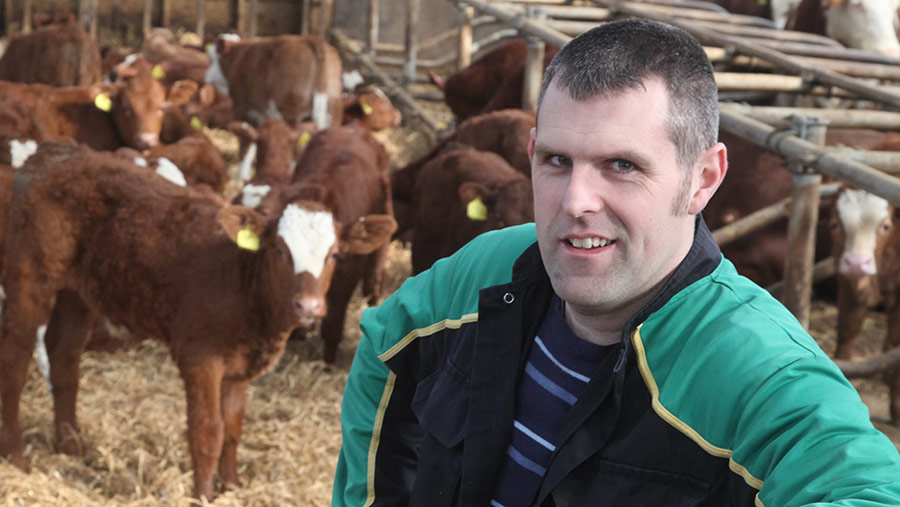Farmer Focus: Recorded a 353-day calving interval this year
 © Ken Amer/Orkney Photographic
© Ken Amer/Orkney Photographic After weeks of mainly dry weather we were starting to look for some moisture in early May. The other week we got it – in the form of snow.
It was strange seeing big dock leaves with a white covering.
Most of the cows and calves have been out for a couple of weeks and didn’t seem to mind the snow too much.
There have been too many days with a bitter north wind, and I do feel sorry for the Simmental cows with light coloured udders. The Salers cows don’t know how lucky they are.
See also: How a South Devon farm has reduced age at first calving
Calving finished on 17 April. Because I put the bulls in earlier it was a bit more spread out than it’s been for a few years.
We had 60% calved in the first three weeks and, thankfully, 92% had calved by the end of week six.
With an average calving interval of 353 days I probably won’t ever see the like again.
Pulling the calving ahead has meant that most of the heifers have calved under 24 months.
I’ve had issues in the past with them losing condition rapidly after turnout, which was found to be cobalt deficiency. A jab of B12 and a couple of boluses and they were sorted, so I’ve given some of them the same before they went to grass this year.
Farming can be like a roller-coaster and just as the calving was coming to an end, the lambing started.
We still have a lot to learn about sheep and the main lesson learnt this year is to make sure we take our gimmers in and get them eating concentrate along with silage before they go with the tup.
Then, when they come in for lambing they will recognise everything which is put in front of them, instead of just silage. We had too many with lambing sickness, but thanks to an energy drench calcium, all of them came round again.
Once the cows have grazed the silage fields, I apply the fertiliser and slurry.
It’s usually a race against the grass growing. Because it’s been so cold and fields are eaten fairly yellow, I was hoping it wouldn’t be such a rush this year.
However, unless the slurry tanker behaves better than it has done lately I will still be spreading slurry when the next article is due.
Steven Sandison farms 100 Simmental and Salers-cross cows and 50 sheep on the Orkney Islands in partnership with his wife, Lorraine, on 123ha, of which 30ha is rented. Making the most of grass is a priority.
